Key takeaways
- Layering enhances outfits by adding depth and character, allowing for personal expression through textures and colors.
- Key principles for successful layering include balancing proportions, mixing materials, and using accessories to unify the look.
- Light fabrics like cotton and natural fibers such as linen or cashmere are ideal for layering, providing comfort and style.
- Experimenting with different lengths and cohesive color palettes can create dynamic and visually appealing layered outfits.
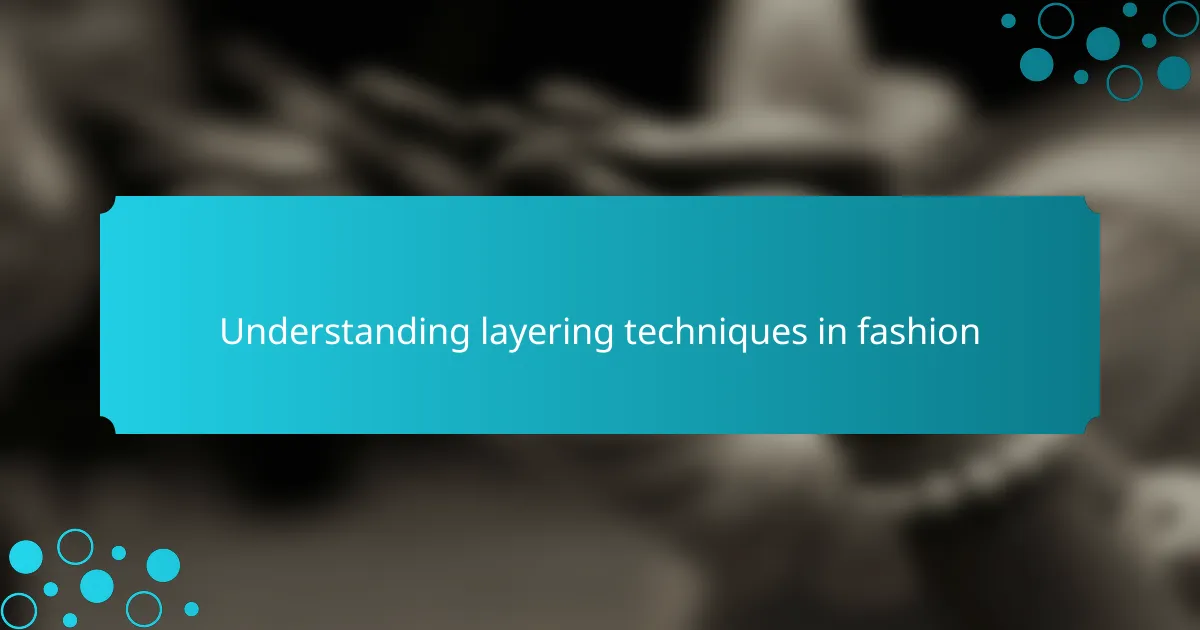
Understanding layering techniques in fashion
Layering techniques in fashion can truly elevate an outfit. I remember the first time I experimented with layering—I was surprised by how a simple cardigan over a graphic tee transformed my look entirely. Suddenly, my outfit felt more complete and expressive, showcasing not just my style but also my personality.
At its core, layering is all about playing with textures, colors, and silhouettes. Have you ever noticed how a light scarf can add depth, even to the simplest outfit? I find that mixing different fabrics—like a chunky knit with silk—creates a visual contrast that’s both interesting and stylish. It’s a little like painting, where each layer adds something unique to the overall masterpiece.
In my experience, the key to mastering layering is to think about proportions and balance. I often consider how each piece interacts with the others—does it add to the overall vibe or distract from it? It’s a playful challenge that encourages creativity, allowing us to explore new combinations and express ourselves in dynamic ways. So, what layering techniques speak to you?
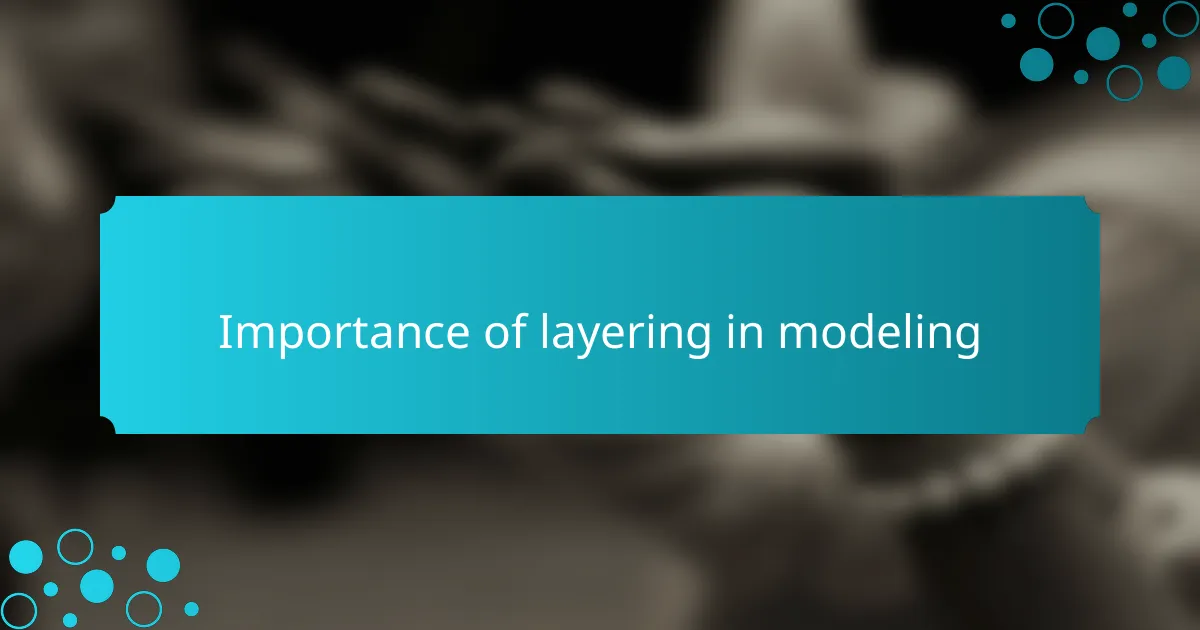
Importance of layering in modeling
Layering plays a crucial role in modeling because it can dramatically affect how an outfit is perceived on camera. I’ve often noticed that the right layers can add depth and dimension to a look, enhancing the model’s silhouette and creating a more engaging visual narrative. Have you ever seen a model in a simple dress instantly transformed by a well-placed jacket or a striking belt? It’s these details that make all the difference in modeling.
Moreover, layering allows for versatility in styling, which is essential in the fast-paced world of modeling. I remember a photoshoot where I switched out several layers—a jacket here, a scarf there—and each change brought a completely new energy to the shots. It’s fascinating how small adjustments can shift not just the look, but also the mood of the image. How do you think different layers can convey distinct emotions in a shoot?
In addition, layering helps models connect with their audience on a deeper level. When I layer pieces intentionally, it tells a story about who I am and what I represent. Each choice, from color to texture, expresses individuality and can resonate with viewers in unique ways. Isn’t it amazing how fashion becomes a language that communicates our inner selves?
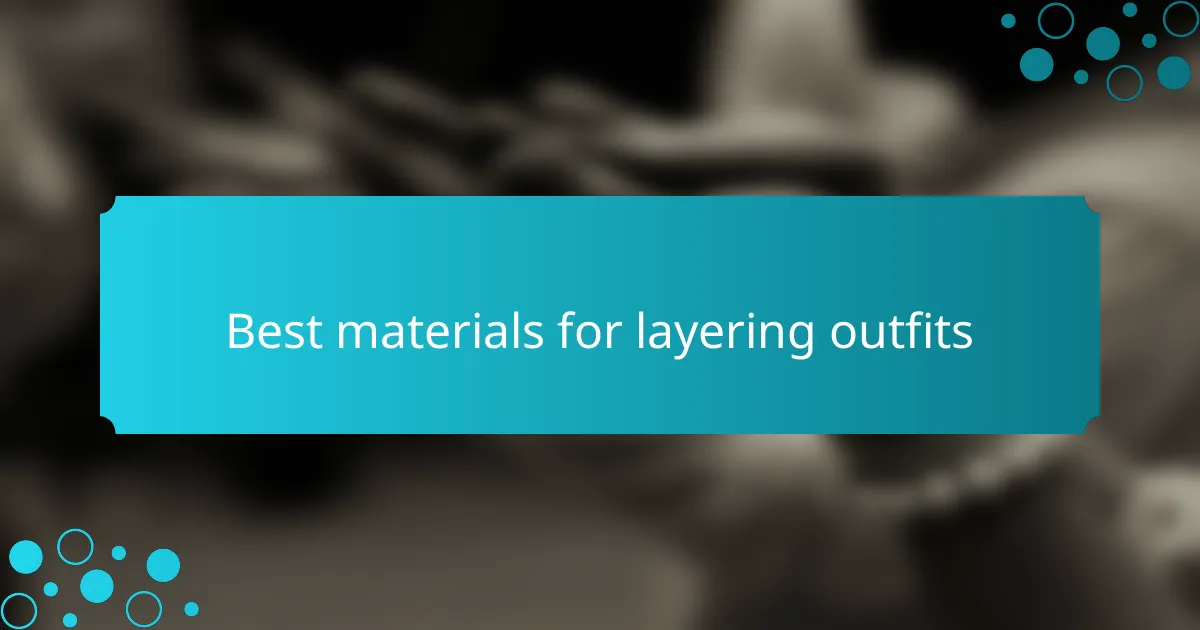
Best materials for layering outfits
When it comes to materials for layering outfits, I find that lighter fabrics really shine. Cotton and lightweight knits are staples in my wardrobe because they provide comfort without overwhelming the look. Have you ever worn a soft cotton tank beneath a sheer blouse? It creates such a lovely dimension, allowing for breathability while still maintaining style.
On the other hand, I can’t overlook the magic of textures. Adding a sleek leather jacket over a cozy wool turtleneck can create this beautiful contrast that feels both edgy and sophisticated. It’s incredible how mixing these materials can not only keep you warm but also express different facets of your personality. Doesn’t it feel fantastic when the materials you wear reflect who you are?
Lastly, I often gravitate toward layering with natural fibers like linen or cashmere. They offer such a luxurious feel against the skin and are fantastic at regulating temperature. I still remember a chilly day when I paired a light cashmere sweater with a linen slip dress. That balance made the outfit comfortable yet chic, bridging the gap between casual and dressed up effortlessly. What are your favorite materials that encourage you to layer creatively?
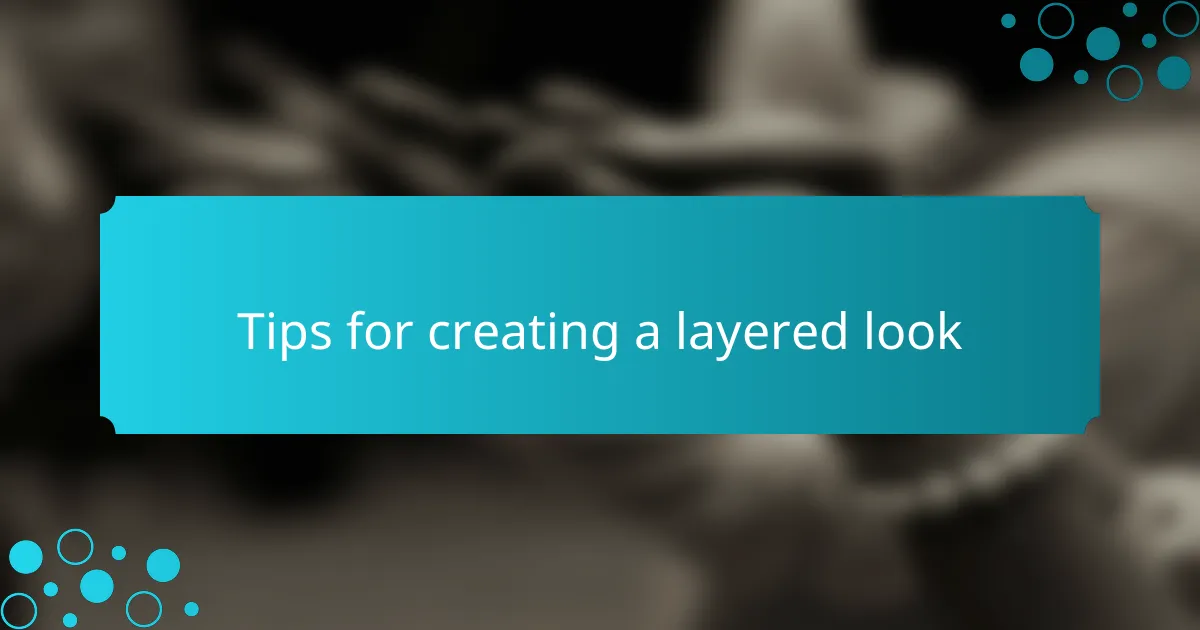
Tips for creating a layered look
Creating a layered look can be both an art and a personal expression of style. One thing I’ve learned is that balance is key; too many layers can feel overwhelming. I often start by choosing a base piece that I love and build around it, adding layers that complement the color and texture.
Here are some tips that help me nail the layered look:
- Play with textures: Mixing knits and denim can create depth; try pairing a chunky sweater with a sleek leather jacket.
- Vary lengths: Experimenting with different garment lengths, such as a long shirt under a cropped sweater, adds interest.
- Use accessories: Scarves, hats, or statement jewelry can break up layers and bring your look together without adding bulk.
- Choose a cohesive color palette: Sticking to a few colors ensures that each layer works well together and isn’t distracting.
- Don’t forget about proportions: If your bottom layer is oversized, balance it with something more fitted on top to maintain shape.

My personal experience with layering
Layering is more than just a style technique for me; it’s an art form that reflects my mood and creativity. I remember one chilly autumn morning when I decided to experiment with various textures and colors from Free People. I paired a flowy cardigan with a fitted turtleneck, and the contrast not only kept me warm but also made me feel confident and stylish as I headed out.
Through my journey of mastering layering, I’ve learned a few key points that have helped me elevate my outfits:
- Start with a base layer that hugs your body—this sets a solid foundation.
- Mix different fabrics for added depth, like combining knits with silks or wools.
- Don’t shy away from bold patterns; a floral dress can pair beautifully under a solid oversized sweater.
- Accessorize wisely—scarves and statement jewelry can complete the look without overwhelming it.
- Finally, always consider the color palette; complementary shades can unify the layered look.
With each layer I add, I feel like I’m telling a story through my outfits, and it’s incredibly empowering.
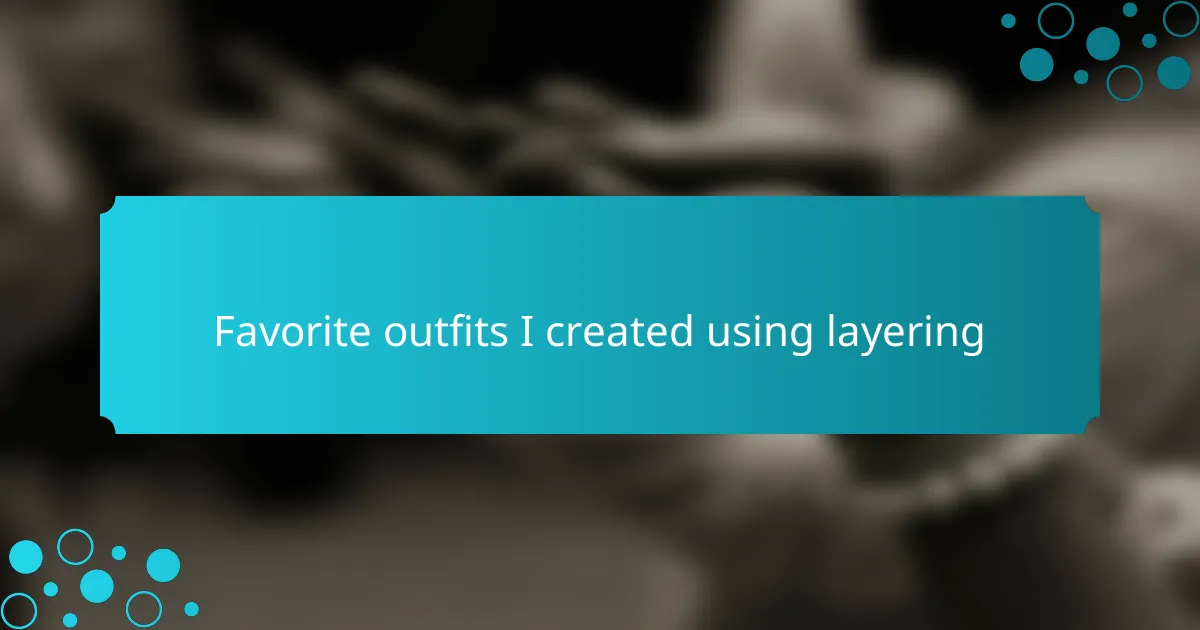
Favorite outfits I created using layering
I’ve always had a soft spot for layering because it allows me to express my individuality through fashion. One of my favorite outfits combined a soft, oversized cardigan from Free People layered over a delicate slip dress. The contrast not only added warmth during chilly evenings but also created a playful yet sophisticated vibe that made me feel confident and stylish.
Another go-to look involved pairing a chunky knit turtleneck sweater with a sleek maxi skirt. This outfit was perfect for transitioning between casual brunches and dressy gatherings, providing both comfort and elegance. I remember receiving compliments that day, which reminded me how the right layers can truly elevate an outfit.
- Oversized cardigan over a slip dress for a cozy and chic look
- Chunky knit turtleneck paired with a sleek maxi skirt for a versatile style
- Light denim jacket layered over a floral blouse for effortless day wear
- Lightweight scarf wrapped around a fitted t-shirt and shorts for a playful touch
- Long sweater vest over a turtleneck and leggings for a trendy silhouette



